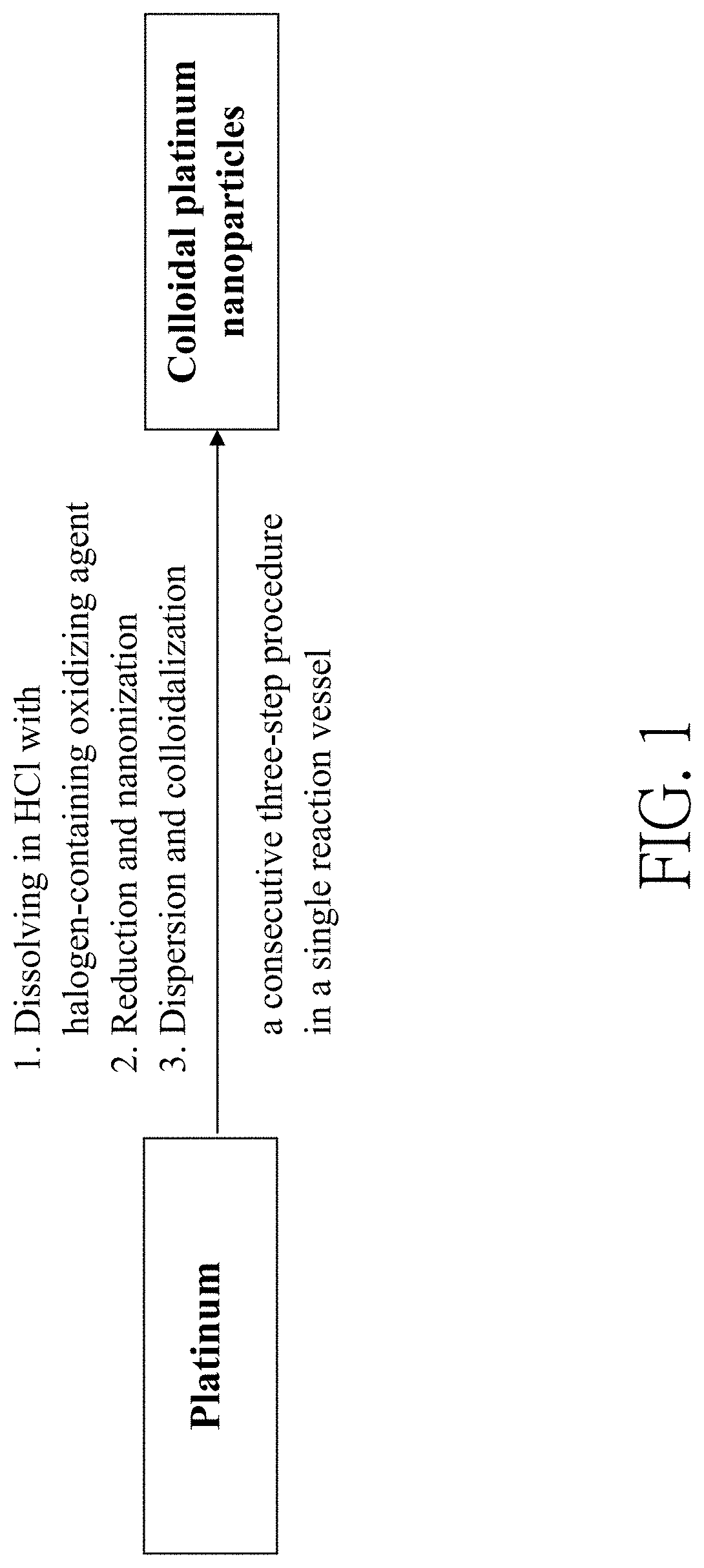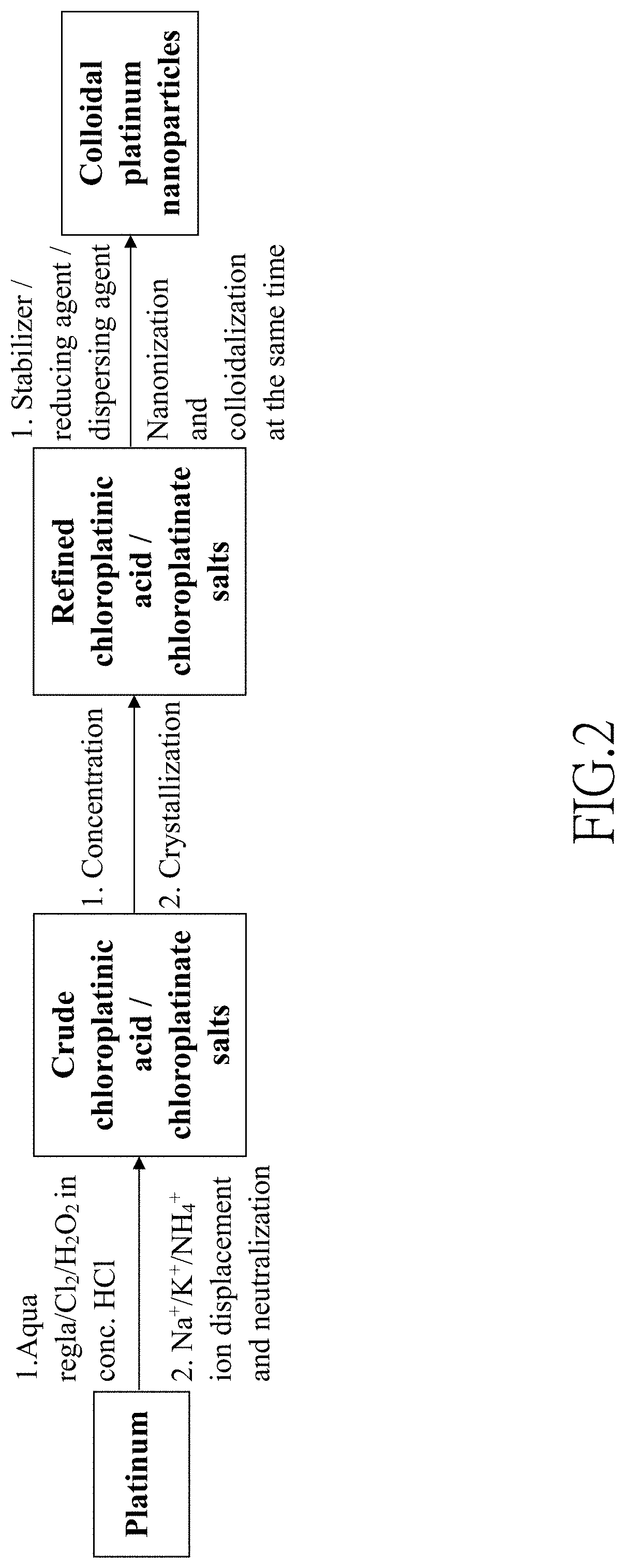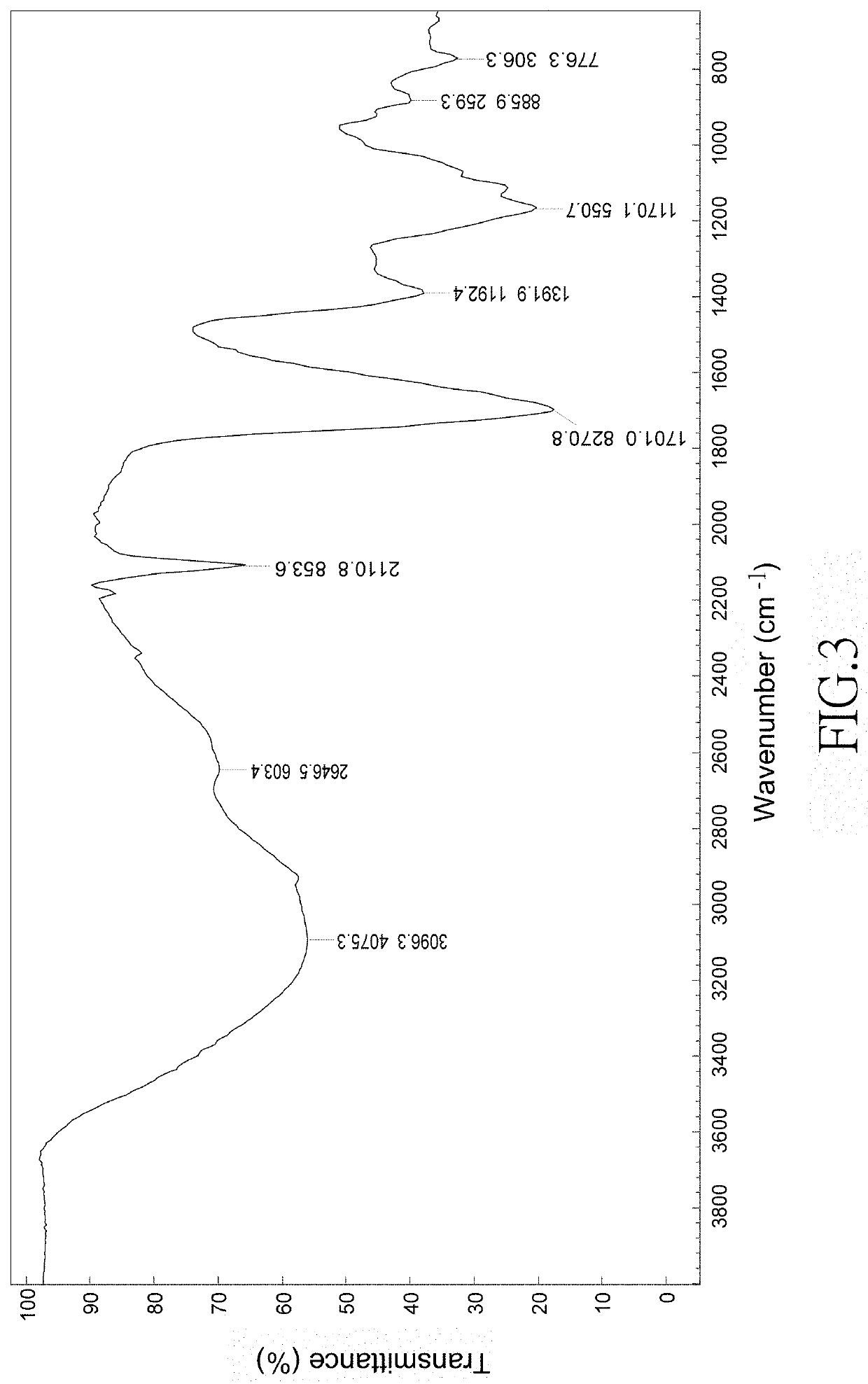Method of making colloidal platinum nanoparticles
a technology of colloidal platinum and nanoparticles, which is applied in the field of colloidal metal nanoparticles making methods, can solve the problems of safety hazards, application limitations of explosive hydrogen gas or biologically toxic carbon monoxide as reducing agent, and complicated process, so as to reduce the flexibility of reagent combinations, affect product diversity, and high yield
- Summary
- Abstract
- Description
- Claims
- Application Information
AI Technical Summary
Benefits of technology
Problems solved by technology
Method used
Image
Examples
example 2
Synthesis of Colloidal Platinum Nanoparticles Using Citric Acid as the Reducing Agent and Glycerol as the Dispersing Agent
[0090]First, in step (a), platinum powders (19.8 mg, 0.10 mmol) and 1 mL of concentrated hydrochloric acid aqueous solution containing 36 wt % of HCl were placed in a 10 mL flat-bottomed flask. Then, 1 mL of aqueous solution containing HIO3 (60 mg, 0.31 mmol) and HClO4 (50 μL of 70 wt % HClO4(aq), 0.58 mmol) was added into the flat-bottomed flask to obtain a reaction mixture. The reaction mixture was stirred and heated at 60° C. for 10 minutes until all platinum powders were consumed to obtain an inorganic platinum solution containing chloroplatinic acid (H2PtCl6).
[0091]Subsequently, in step (b), citric acid (160 mg, 0.8 mmol) was added into the flat-bottomed flask and mixed with the solution containing H2PtCl6 to form a mixture solution. Then, the flat-bottomed flask was placed on a hot plate and heated at 130° C. for 10 minutes to perform a reduction reaction. ...
example 3
Synthesis of Colloidal Platinum Nanoparticles Using Citric Acid as the Reducing Agent and Lactic Acid as the Dispersing Agent
[0093]First, in step (a), platinum powders (19.0 mg, 0.10 mmol) and 1 mL of concentrated hydrochloric acid aqueous solution containing 36 wt % of HCl were placed in a 10 mL flat-bottomed flask. Then, 1 mL of aqueous solution containing KIO3 (70 mg, 0.33 mmol) and KClO4 (30 mg, 0.22 mmol) was added into the flat-bottomed flask to obtain a reaction mixture. The reaction mixture was stirred and heated at 60° C. for 10 minutes until all platinum powders were consumed to obtain an inorganic platinum solution containing potassium chloroplatinate (K2PtCl6).
[0094]Subsequently, in step (b), citric acid (80 mg, 0.42 mmol) was added into the flat-bottomed flask and mixed with the solution containing K2PtCl6 to form a mixture solution. Then, the flat-bottomed flask was placed on a hot plate and heated at 130° C. for 10 minutes to perform a reduction reaction. The reductio...
example 4
Synthesis of Colloidal Platinum Nanoparticles Using Citric Acid as the Reducing Agent and Poly(Ethylene Glycol) as the Dispersing Agent
[0096]First, in step (a), platinum powders (19.7 mg, 0.10 mmol) and 1 mL of concentrated hydrochloric acid aqueous solution containing 36 wt % of HCl were placed in a 10 mL flat-bottomed flask. Then, 1 mL of aqueous solution containing KClO3 (70 mg, 0.57 mmol) and KClO4 (20 mg, 0.14 mmol) was added into the flat-bottomed flask to obtain a reaction mixture. The reaction mixture was stirred and heated at 60° C. for 10 minutes until all platinum powders were consumed to obtain an inorganic platinum solution containing potassium chloroplatinate.
[0097]Subsequently, in step (b), citric acid (100 mg, 0.52 mmol) was added into the flat-bottomed flask and mixed with the solution containing potassium chloroplatinate to form a mixture solution. Then, the flat-bottomed flask was placed on a hot plate and heated at 130° C. for 10 minutes to perform a reduction re...
PUM
| Property | Measurement | Unit |
|---|---|---|
| Temperature | aaaaa | aaaaa |
| Temperature | aaaaa | aaaaa |
| Temperature | aaaaa | aaaaa |
Abstract
Description
Claims
Application Information
 Login to View More
Login to View More - R&D
- Intellectual Property
- Life Sciences
- Materials
- Tech Scout
- Unparalleled Data Quality
- Higher Quality Content
- 60% Fewer Hallucinations
Browse by: Latest US Patents, China's latest patents, Technical Efficacy Thesaurus, Application Domain, Technology Topic, Popular Technical Reports.
© 2025 PatSnap. All rights reserved.Legal|Privacy policy|Modern Slavery Act Transparency Statement|Sitemap|About US| Contact US: help@patsnap.com



